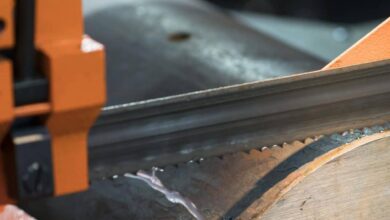So that a dynamometer serves

Although it is not one of the usual tools in our workshop, the truth is that a dynamometer can be useful when carrying out different jobs. Especially thanks to the wide variety of existing models, which also increases its applications.
According to its definition, the dynamometer is a tool that takes advantage of Hooke’s law and the elasticity of certain materials to evaluate the variations applied to it, either by the effect of traction (pulling it) or by the application of a certain weight. A theoretical definition that leaves us more cloudy than clear when it comes to knowing what we can use a dynamometer for in our workshop.
That is why we wanted to ask ourselves what a dynamometer is for and what are the most common uses that we can give this device. Some uses that may surprise you and that you can access with almost any model that you find on the market or in any comparison of dynamometers that you have at hand, except in the case of the most industrial or specialized uses.
By the way, before starting to see what we can do with a dynamometer, it is important to take into account a couple of details. On the one hand, we have to know that not all dynamometers are suitable for all the uses that we are commenting on. Within the current wide range of dynamometers, which can reach hundreds of versions, there are models that are more suitable for some uses than others. It is true that for basic uses surely any product will work for us, but there are certain measurements for which a specific dynamometer is needed.
On the other hand, also related to the above, it is important to take into account the scale and measurement capacity. As with other instruments such as meters or rulers, the dynamometer has a specific measurement capacity and a scaling that is in line with this capacity. So, with more precise products available, it would not make sense to use a dynamometer that measures force only in kilos when we need to know the weight of small pieces of just a few grams. It would also make no sense to bet on a simple dynamometer to measure forces of several hundred Newtons, in which the dynamometer will break before measuring that force. So choosing the product correctly according to its use is key.

Force and mass measurement
One of the main applications of the dynamometer is to measure forces. Thanks to the spring and the included scale, we can know what is the force generated by an object that hangs from another. On the other hand, applying the equivalence between Newtons and kilos, this product also allows us to calculate both the mass and the weight of the specific object with which we are working.
To obtain this data, we only have to place the object on the hook that includes the dynamometer or on the plate that some models incorporate and at once we will have the reading of said force. Something that is interesting when it comes to knowing the resistance of certain materials to traction or to hanging masses of them.
scale manufacturing
In line with what we have just commented, if we change the scale and the design of the dynamometer we can obtain a scale, in which to know the weight of any object. In this case, the scale of the device is varied, so that it directly measures the weight in grams or kilos, as appropriate. It is also common for these products to include a plate, which is already part of the tare or zero weight of the product, in order to improve the final results of the weighing. This is one of the cases in which choosing a product with a suitable scale for our specific needs is key.
Calculation of resistance of cables and ropes
Another use of the dynamometer is to calculate the resistance of certain objects, such as ropes and cables. These objects are often used to pull or drag of different masses, so it is essential to know if the nominal resistance that the products have according to the manufacturer corresponds to reality.
To perform these tests, the rope or cable is flooded to the hook of the dynamometer and the hook is started to be pulled with a machine until the rope or cable finally breaks. The value marked by the dynamometer at the time of this breakage is the one that indicates the maximum mass capacity that it can support during conventional use.

Use in dentistry
Although it is not a proper use of a conventional workshop, the dynamometer is one of the key tools in dentistry and especially in the development of dental prostheses. The use of a dynamometer allows to verify the resistance of the materials and the force that a certain compound can withstand before breaking. Something that is essential when manufacturing dentures, bridges and implants, in a context in which, despite what it may seem, we apply very remarkable forces when chewing food.
automotive use
Although it may be strange, the dynamometer is a tool of great importance in the automotive sector. In this case, a very specific model such as the roller dynamometer is used. A large model on which the vehicle is placed, placing the drive wheels on top of said rollers.
Its main use is to measure the capacity of the vehicle’s engine to move the wheels on said axle, which allows the state of the engine to be verified and the power it develops to be measured. Something essential when designing new vehicles, proceeding to homologate them or verifying their status, in terms of power development.



